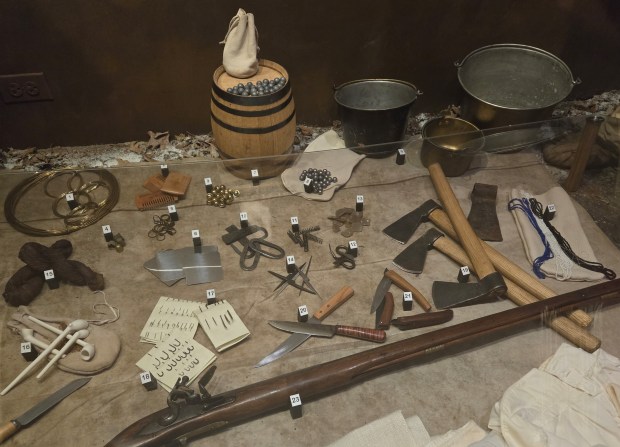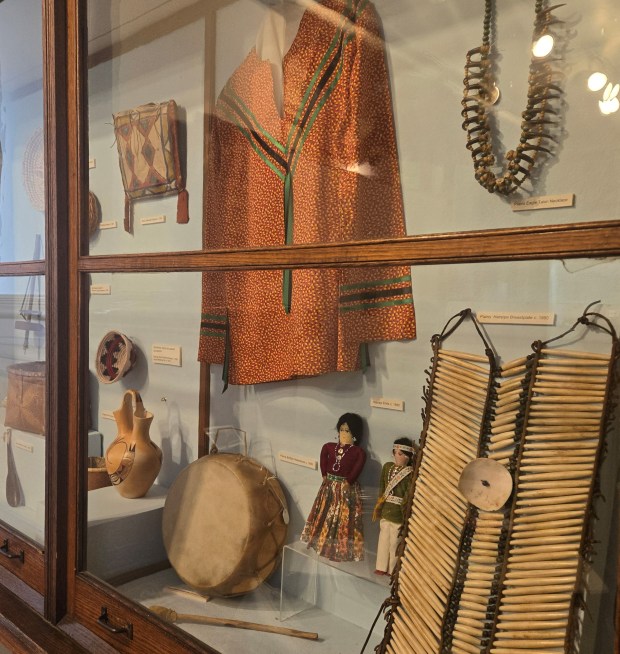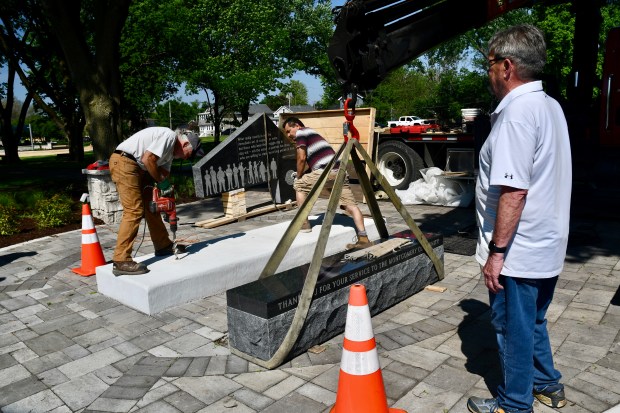The Elgin Public Museum of Natural History & Anthropology plans to remove the items making up its first-floor Native American exhibits as it brings its collection into compliance with new federal regulations protecting items belonging to America’s earliest inhabitants.
“We’re going to make sure we get anything out of there that could be potentially problematic,” said Sharry Blazier, the museum’s director and education coordinator.
The 104-year-old museum, located in Elgin’s Lords Park, has two Native American exhibits.
On the main floor, objects from daily life, like baby booties, pipe pouches, clothing and necklaces, are display. The second-floor exhibit, which explores Native Americans’ interaction with European settlers, will remain open but items like combs, rings, brass pots and a musket tool will be removed.
Every item needs to be evaluated because more ceremonial objects have been added to the Native American Graves Protection and Repatriate Act, passed in 2000, which requires human remains and items important to indigenous people be returned to the ancestors of the tribes from which they came.
It’s a monumental task for a museum with more than 1,000 objects that need to be reviewed, Blazier said.
“The new regulations are a little murky about what exactly constitutes ceremonial objects,” she said. “I think there’s still a lot of confusion as everyone is trying to figure it out.
“Obviously, anything used in a sacred ceremony should not be in our hands without specific permission. (But) we have so little information about where so many of our things came from.”
It used to be that people would come to the museum to donate things they owned or found, Blazier said, but “we had no idea where it was found, whether it was purchased or stolen. No one really thought about it back in the day. We would never take anything in today without extreme caution.”
Determining what can remain and what must be returned is difficult task, she said.
“For instance, we know we have a couple of oak pipes in our exhibit. However, they are replicas not made by (indigenous people). They are here to be representative of the story we are telling and they are definitely not sacred,” she said. “But in the other room, we have pipe bags. We are not clear on whether the bag is considered sacred. We have to find out exactly what we are dealing with.”
And even if they know something is real, trying to figure where it should go is another tough task. When they were told the human remains in their collection had to be returned, it took years to research where they sould be sent, Blazier said.
Some had to be transported to the Illinois State Museum in Springfield for DNA tests, she said. They don’t know when they might get an answer because the backlog there is enormous.
There’s no argument that Native Americans should have the remains of their ancestors and their belongings back, but the process is complicated, Blazier said. “There’s not a complete path to do it. I hope it will be better as a little more time goes by,” she said.

One thing that could help is the recent decision to create a trust for a portion of ancestral land in DeKalb County belonging to the Prairie Band Potawatomi Nation, which was illegally auctioned off 175 years ago. It’s the first federally recognized tribal land in Illinois.
The tribe will be able to help the museum as it sorts through its collection, said Abigale Rasmussen, museum assistant and archeologist.
“We finally have a direct contact,” Blazier said.
The new regulations requiring the return of so many items raises another issue as well: Without the artifacts, how do you illustrate and educate people about Native American history?
“We want to be respectful, but we also want to educate people and we don’t want to say we’re going to neglect this entire aspect of human anthropology,” Blazier said.
Gloria Casas is a freelance reporter for The Courier-News.




